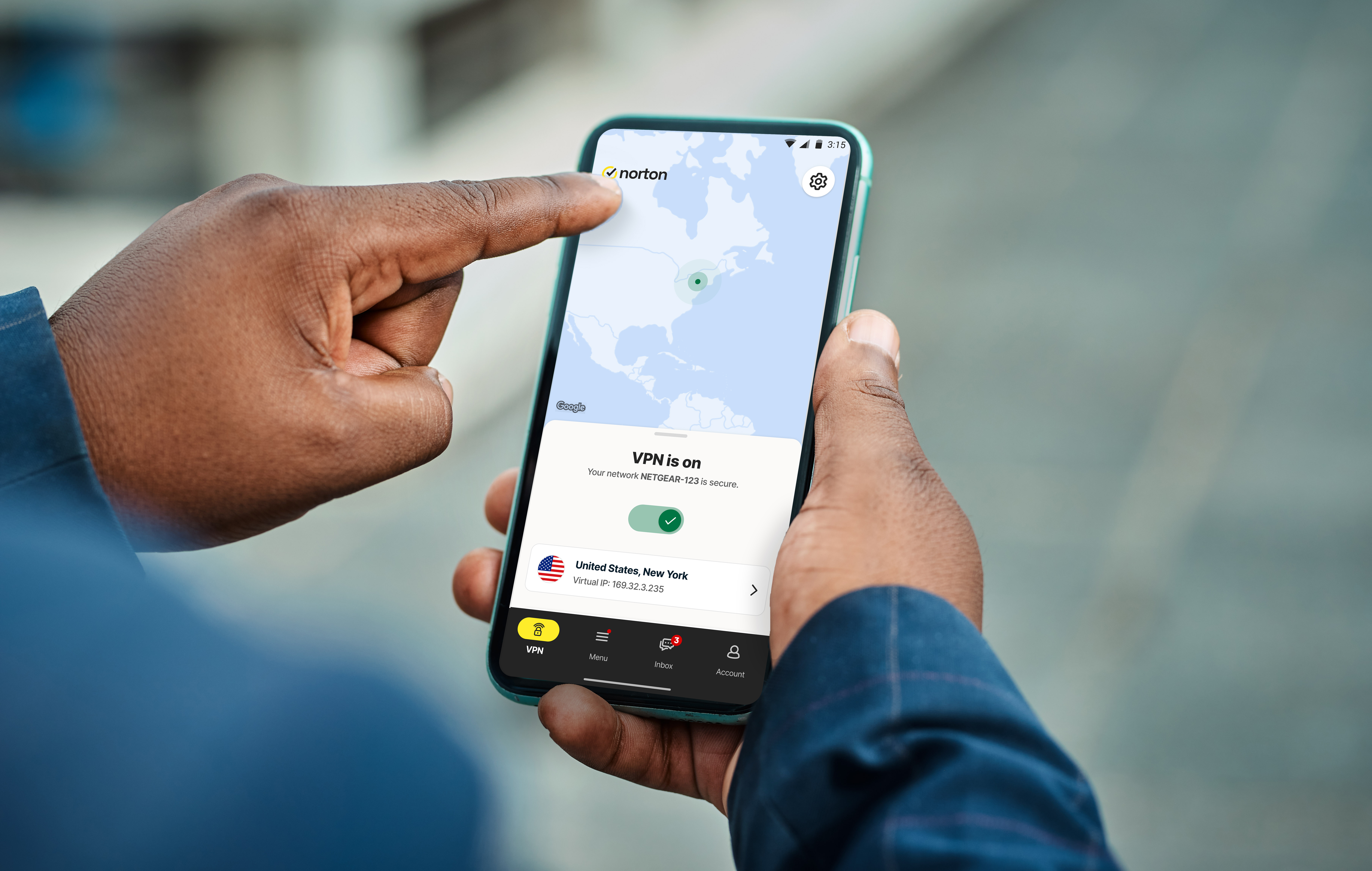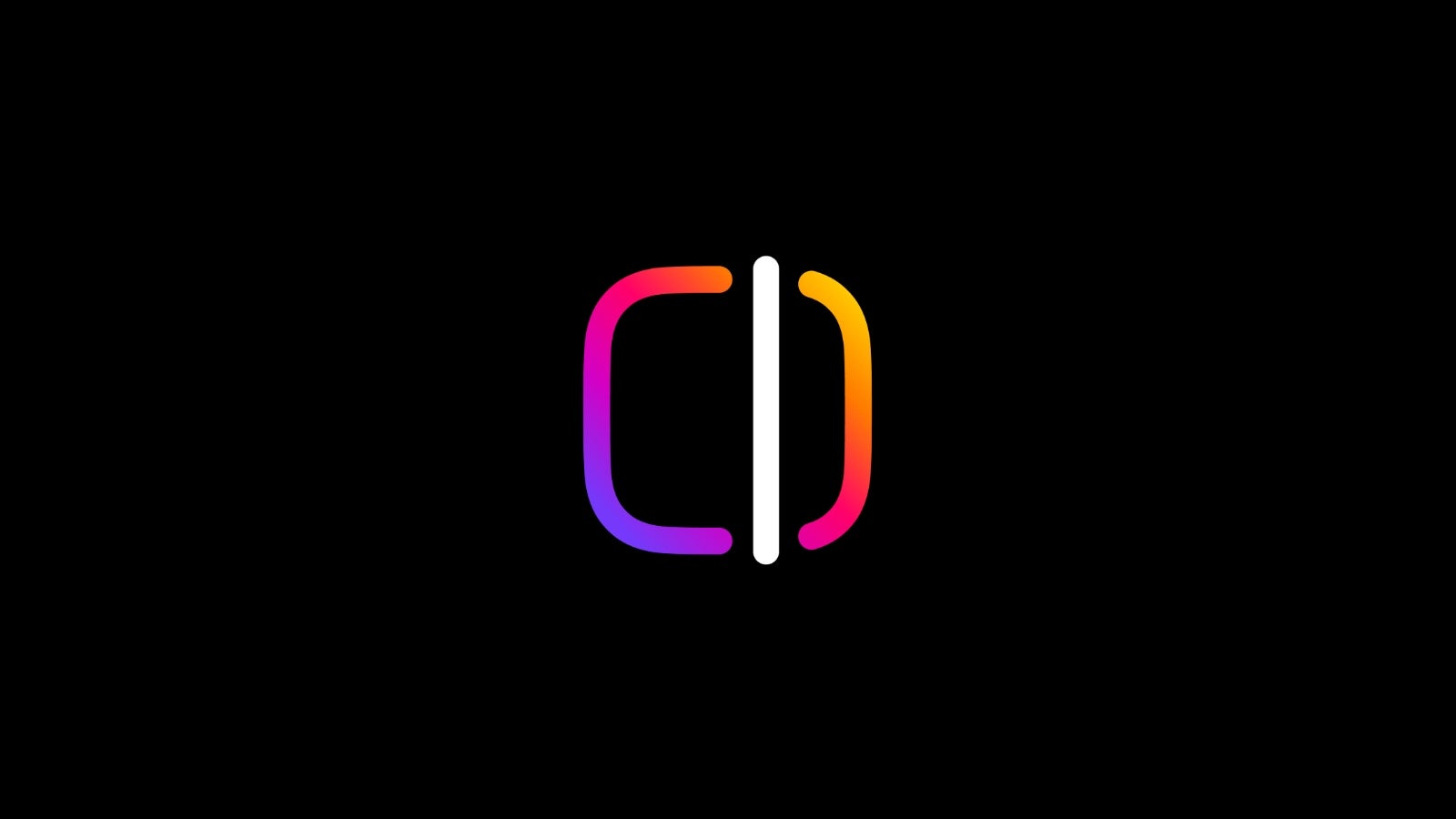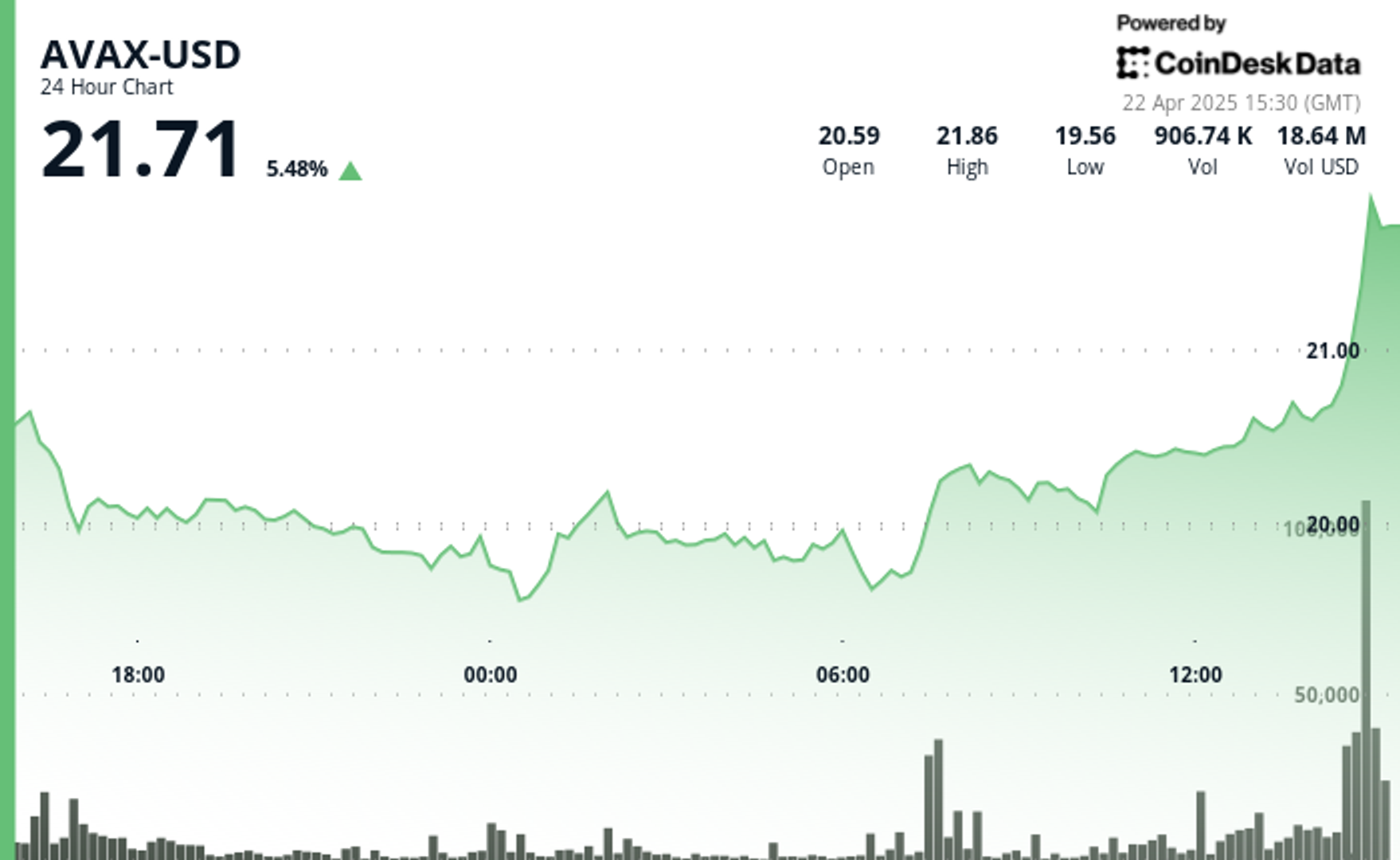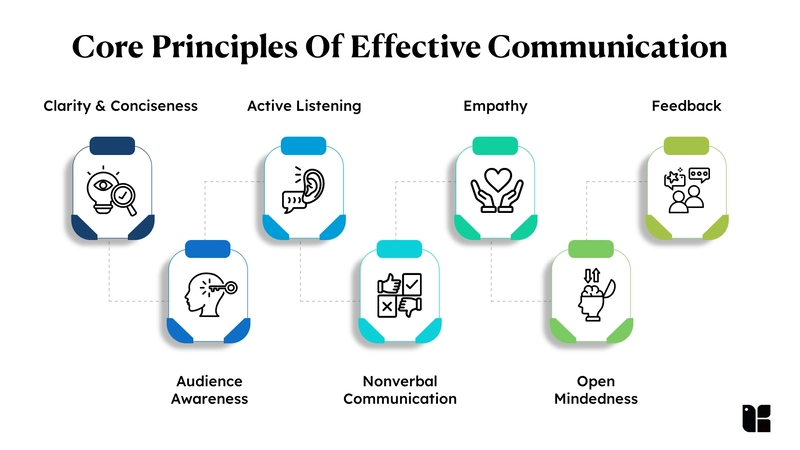How Knowledge Sharing and Communication: Building a Collaborative Dev Culture
Introduction In the fast-paced world of software development, the difference between a thriving project and a failing one often comes down to how effectively team members share knowledge and communicate. As development teams become increasingly distributed and projects grow more complex, establishing strong communication channels and knowledge-sharing practices isn't just nice to have—it's essential for success. According to recent studies, development teams prioritizing knowledge sharing deliver projects 28% faster and experience a 3.2x increase in client satisfaction. But how exactly do you build this collaborative culture? Let's dive into practical strategies that work in real development environments. Why Knowledge Sharing Matters for Dev Teams Knowledge sharing is transferring information, skills, and understanding between team members. This goes beyond simply documenting code for development teams—it encompasses sharing context, rationale, and expertise that helps everyone perform better. The Hidden Costs of Poor Knowledge Sharing When knowledge remains siloed within individual team members, several problems emerge: Developers spend up to 75% of their time trying to understand code written by others Critical information walks out the door when team members leave New team members take longer to become productive The same problems get solved multiple times by different people Technical debt accumulates as context and rationale get lost As one developer at NASA put it during a pair programming study: "A pair wrote 866 lines (with tests) in 3 weeks, while a solo developer wrote 2144 lines (no tests) in 6 weeks." The quality difference was substantial, with the pair-programmed code containing fewer bugs and better architecture. Fundamental Benefits of Effective Knowledge Sharing When teams prioritize knowledge sharing, they experience: Faster onboarding: New team members become productive more quickly Reduced bottlenecks: Work doesn't stall when a key person is unavailable Higher code quality: More eyes on the code means fewer bugs Improved innovation: Cross-pollination of ideas leads to better solutions. Enhanced team resilience: The team can adapt when people leave or change roles Building Effective Knowledge-Sharing Practices Let's look at practical ways to foster knowledge sharing in your development team. 1. Implement Pair Programming Strategically Pair programming isn't just about two people at one keyboard—it's a deliberate knowledge-sharing practice. Here's how to make it work: Set clear roles: Define who's "driving" (writing code) and who's "navigating" (reviewing and thinking big picture) Switch roles regularly: Change every 20-30 minutes to keep both developers engaged. Use the right tools: For remote teams, tools like VS Code Live Share or JetBrains Code With Me enable real-time collaboration. Start small: Begin with complex features or bug fixes where two minds are better than one. A senior developer at a fintech startup shared: "We pair junior devs with seniors for at least 2 hours daily. Our onboarding time dropped from 3 months to 3 weeks, and code quality improved dramatically." 2. Create a Knowledge Base That Developers Actually Use Most internal documentation goes unused. According to Stack Overflow's survey, less than 20% of developers regularly use their company's internal documentation. To create documentation that actually gets used: Keep it close to the code: Use tools that integrate with your IDE or repository Make it contextual: Documentation should be accessible where developers need it Ensure it's searchable: Developers should be able to find what they need quickly Keep it updated: Outdated documentation is worse than no documentation Using a platform like Teamcamp can help centralize project documentation alongside tasks and communication, making it easier for developers to find what they need without switching contexts. Its unified project dashboard ensures that documentation is accessible within the same environment where work happens. 3. Foster Regular Knowledge-Sharing Sessions Structured knowledge-sharing sessions create space for deliberate learning: Tech talks: 15-30 minute presentations on specific technologies or techniques Code reviews: Group code reviews for complex changes Retrospectives: Regular sessions to reflect on what worked and what didn't Lightning demos: Quick 5-minute demonstrations of useful tricks or tools A lead developer at a SaaS company implemented "Friday Learning Sessions," where team members take turns sharing something they learned that week. "These sessions not only spread knowledge but also built a culture where learning is celebrated," they reported. Integrated Communication Tools: The Backbone of Collaboration While practices are essential, having the right tools to

Introduction
In the fast-paced world of software development, the difference between a thriving project and a failing one often comes down to how effectively team members share knowledge and communicate.
As development teams become increasingly distributed and projects grow more complex, establishing strong communication channels and knowledge-sharing practices isn't just nice to have—it's essential for success.
According to recent studies, development teams prioritizing knowledge sharing deliver projects 28% faster and experience a 3.2x increase in client satisfaction. But how exactly do you build this collaborative culture? Let's dive into practical strategies that work in real development environments.
Why Knowledge Sharing Matters for Dev Teams
Knowledge sharing is transferring information, skills, and understanding between team members. This goes beyond simply documenting code for development teams—it encompasses sharing context, rationale, and expertise that helps everyone perform better.
The Hidden Costs of Poor Knowledge Sharing
When knowledge remains siloed within individual team members, several problems emerge:
- Developers spend up to 75% of their time trying to understand code written by others
- Critical information walks out the door when team members leave
- New team members take longer to become productive
- The same problems get solved multiple times by different people
- Technical debt accumulates as context and rationale get lost
As one developer at NASA put it during a pair programming study: "A pair wrote 866 lines (with tests) in 3 weeks, while a solo developer wrote 2144 lines (no tests) in 6 weeks."
The quality difference was substantial, with the pair-programmed code containing fewer bugs and better architecture.
Fundamental Benefits of Effective Knowledge Sharing
When teams prioritize knowledge sharing, they experience:
- Faster onboarding: New team members become productive more quickly
- Reduced bottlenecks: Work doesn't stall when a key person is unavailable
- Higher code quality: More eyes on the code means fewer bugs
- Improved innovation: Cross-pollination of ideas leads to better solutions.
- Enhanced team resilience: The team can adapt when people leave or change roles
Building Effective Knowledge-Sharing Practices
Let's look at practical ways to foster knowledge sharing in your development team.
1. Implement Pair Programming Strategically
Pair programming isn't just about two people at one keyboard—it's a deliberate knowledge-sharing practice. Here's how to make it work:
- Set clear roles: Define who's "driving" (writing code) and who's "navigating" (reviewing and thinking big picture)
- Switch roles regularly: Change every 20-30 minutes to keep both developers engaged.
- Use the right tools: For remote teams, tools like VS Code Live Share or JetBrains Code With Me enable real-time collaboration.
- Start small: Begin with complex features or bug fixes where two minds are better than one.
A senior developer at a fintech startup shared: "We pair junior devs with seniors for at least 2 hours daily. Our onboarding time dropped from 3 months to 3 weeks, and code quality improved dramatically."
2. Create a Knowledge Base That Developers Actually Use
Most internal documentation goes unused. According to Stack Overflow's survey, less than 20% of developers regularly use their company's internal documentation. To create documentation that actually gets used:
- Keep it close to the code: Use tools that integrate with your IDE or repository
- Make it contextual: Documentation should be accessible where developers need it
- Ensure it's searchable: Developers should be able to find what they need quickly
- Keep it updated: Outdated documentation is worse than no documentation
Using a platform like Teamcamp can help centralize project documentation alongside tasks and communication, making it easier for developers to find what they need without switching contexts. Its unified project dashboard ensures that documentation is accessible within the same environment where work happens.
3. Foster Regular Knowledge-Sharing Sessions
Structured knowledge-sharing sessions create space for deliberate learning:
- Tech talks: 15-30 minute presentations on specific technologies or techniques
- Code reviews: Group code reviews for complex changes
- Retrospectives: Regular sessions to reflect on what worked and what didn't
- Lightning demos: Quick 5-minute demonstrations of useful tricks or tools
A lead developer at a SaaS company implemented "Friday Learning Sessions," where team members take turns sharing something they learned that week. "These sessions not only spread knowledge but also built a culture where learning is celebrated," they reported.
Integrated Communication Tools: The Backbone of Collaboration
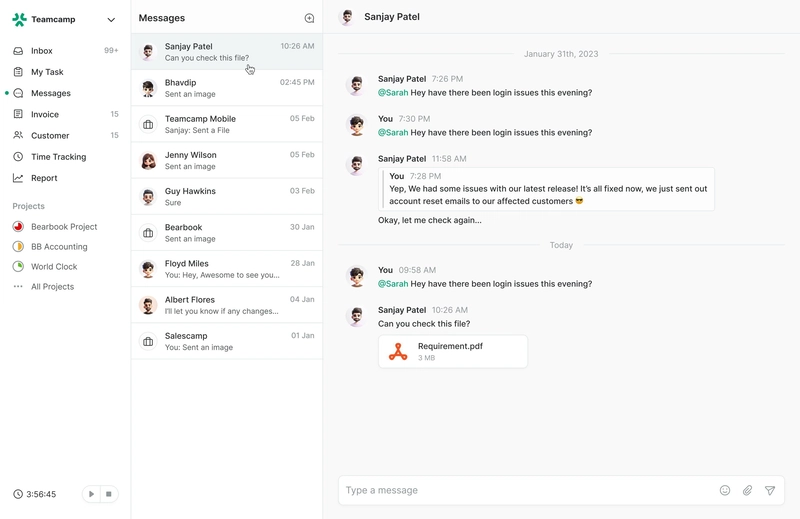
While practices are essential, having the right tools to support them is equally crucial. Let's explore how integrated communication tools enhance developer collaboration.
Explore Teamcamp Team Colloabration Feature
Why Integrated Tools Matter
Developers typically use multiple tools daily: code editors, version control, issue trackers, chat applications, and more. When these tools don't talk to each other, context gets lost, and productivity suffers.
Integrated communication tools bring everything together, reducing context switching and ensuring information flows seamlessly. This integration is particularly valuable for remote and hybrid teams where face-to-face communication is limited.
Key Features of Effective Communication Tools for Developers
The best communication tools for development teams include:
- Real-time messaging: Instant communication for quick questions and updates
- Code-specific features: The ability to share and discuss code snippets
- Task integration: Direct links between conversations and related tasks
- Searchable history: Easy access to past discussions and decisions
- Notification management: Controls to prevent interruptions during deep work
Platforms like Teamcamp offer these features in a unified environment, allowing developers to communicate in context without switching between multiple applications. With features like task prioritization and milestone tracking, teams can stay aligned on project goals while maintaining clear communication channels.
Balancing Synchronous and Asynchronous Communication
Not all communication needs to happen in real time. Effective teams use a mix of:
- Synchronous communication: Real-time discussions for complex problems, brainstorming, and urgent issues
- Asynchronous communication: Written updates, documentation, and non-urgent questions that don't interrupt deep work
A development team at a growing startup implemented "focus time" blocks where team members could work without interruption, using asynchronous channels for non-urgent communication. "Our productivity increased by 32%, and we actually communicated more effectively because people thought more carefully about their questions," their tech lead reported.
Practical Implementation: A Step-by-Step Approach
Building a knowledge-sharing culture doesn't happen overnight. Here's a practical approach to implementing these practices in your team:
1. Assess Your Current State
Start by understanding where knowledge sharing breaks down in your team:
- Where do new team members struggle to get up to speed?
- What questions come up repeatedly?
- What knowledge is at risk if certain team members leave?
- How efficiently does information flow between team members?
2. Choose the Right Tools
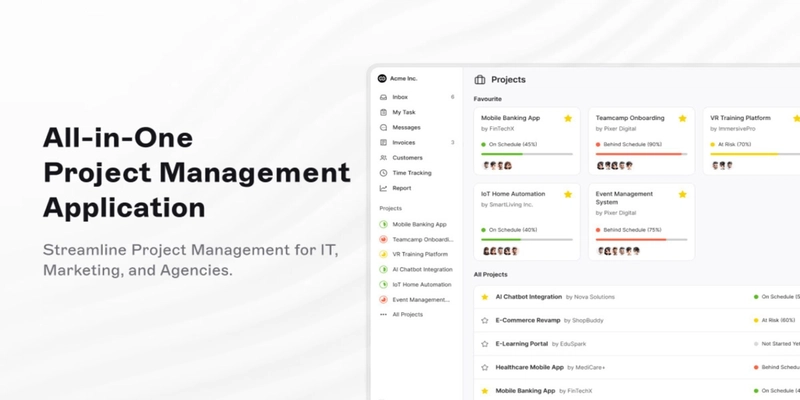
Select tools that integrate well with your existing workflow. Look for:
- Seamless integration with your development environment
- Support for both synchronous and asynchronous communication
- Features that encourage knowledge sharing and documentation
- User-friendly interfaces that developers will actually use
Teamcamp offers a unified platform that brings together task management, communication, and documentation in one place. Its customizable dashboards allow teams to track progress and milestones in real-time, while its collaboration features to ensure that knowledge is shared effectively across the team.
3. Start Small and Build Momentum
Don't try to change everything at once:
- Begin with one or two practices that address your most significant pain points
- Measure the impact to demonstrate value
- Celebrate and share successes
- Gradually introduce additional practices
A development team at a healthcare tech company started with just weekly knowledge-sharing sessions. After seeing positive results, they expanded to pair programming for complex features and eventually built a comprehensive knowledge base. "The key was starting small and showing value quickly," their engineering manager explained.
4. Create Accountability and Recognition
Make knowledge sharing part of your team's culture:
- Include knowledge sharing in performance reviews
- Recognize and celebrate those who contribute to the team's knowledge base
- Create roles or rotations for maintaining documentation and facilitating knowledge-sharing
- Lead by example—managers and senior developers should actively participate
Overcoming Common Challenges
Even with the best intentions, teams often encounter obstacles when implementing knowledge-sharing practices.
"We Don't Have Time for This"
The most common objection is that knowledge sharing takes time away from "real work." Address this by:
- Starting with small, time-boxed activities
- Measuring and sharing the time saved through better knowledge-sharing
- Integrating knowledge sharing into existing workflows rather than adding it as a separate activity
"Our Codebase Is Too Complex to Document"
Complex codebases benefit most from good documentation and knowledge sharing. Approach this by:
- Focusing on the most critical or frequently changed parts first
- Using automated documentation tools where possible
- Creating high-level architecture diagrams to provide context
- Documenting the "why" behind decisions rather than just the "how."
"Team Members Don't Participate"
If participation is low:
- Make knowledge sharing a regular, scheduled activity
- Create a safe environment where questions are welcomed
- Recognize and celebrate contributions
- Ensure tools are user-friendly and integrated into daily workflows
Teamcamp's intuitive interface and seamless integration with development workflows make it easier for team members to participate in knowledge sharing without disrupting their work.
Measuring Success: Key Metrics for Knowledge Sharing
To ensure your knowledge-sharing initiatives are working, track metrics such as:
- Time to onboard new team members
- Time spent searching for information
- Number of repeated questions
- Bus factor (how many people need to be unavailable before the project stalls)
- Team satisfaction and engagement
A product development team at a fintech company tracked these metrics before and after implementing structured knowledge-sharing practices. They found that onboarding time decreased by 40%, and critical components' "bus factor" increased from 1-2 people to 3-4 people within six months.
Conclusion: Building a Sustainable Knowledge-Sharing Culture
Effective knowledge sharing and communication are not just nice-to-have features of a development team—they're essential components of sustainable success. By implementing the proper practices and tools, you can create a culture where knowledge flows freely, team members learn continuously, and projects succeed consistently.
Start by assessing your current state, implementing small changes, and choosing integrated tools that support your team's workflow. Platforms like Teamcamp can provide the foundation for effective collaboration, bringing together task management, communication, and documentation in one seamless environment.
Remember that building a knowledge-sharing culture is a journey, not a destination. Continuously evaluate and refine your practices based on feedback and results. With persistence and the right approach, you'll create a collaborative development culture that delivers better results and makes your team a more engaging and fulfilling workplace.
Ready to transform your team's collaboration and knowledge sharing? Explore how Teamcamp can help streamline your workflow and build a more connected development team today.





















































.jpg)





















































































































![[The AI Show Episode 144]: ChatGPT’s New Memory, Shopify CEO’s Leaked “AI First” Memo, Google Cloud Next Releases, o3 and o4-mini Coming Soon & Llama 4’s Rocky Launch](https://www.marketingaiinstitute.com/hubfs/ep%20144%20cover.png)
























































































































































![BPMN-procesmodellering [closed]](https://i.sstatic.net/l7l8q49F.png)



















































































.jpg?#)



-All-will-be-revealed-00-35-05.png?width=1920&height=1920&fit=bounds&quality=70&format=jpg&auto=webp#)
-All-will-be-revealed-00-17-36.png?width=1920&height=1920&fit=bounds&quality=70&format=jpg&auto=webp#)
-Jack-Black---Steve's-Lava-Chicken-(Official-Music-Video)-A-Minecraft-Movie-Soundtrack-WaterTower-00-00-32_lMoQ1fI.png?width=1920&height=1920&fit=bounds&quality=70&format=jpg&auto=webp#)

























_Weyo_alamy.png?width=1280&auto=webp&quality=80&disable=upscale#)
_Brain_light_Alamy.jpg?width=1280&auto=webp&quality=80&disable=upscale#)













































































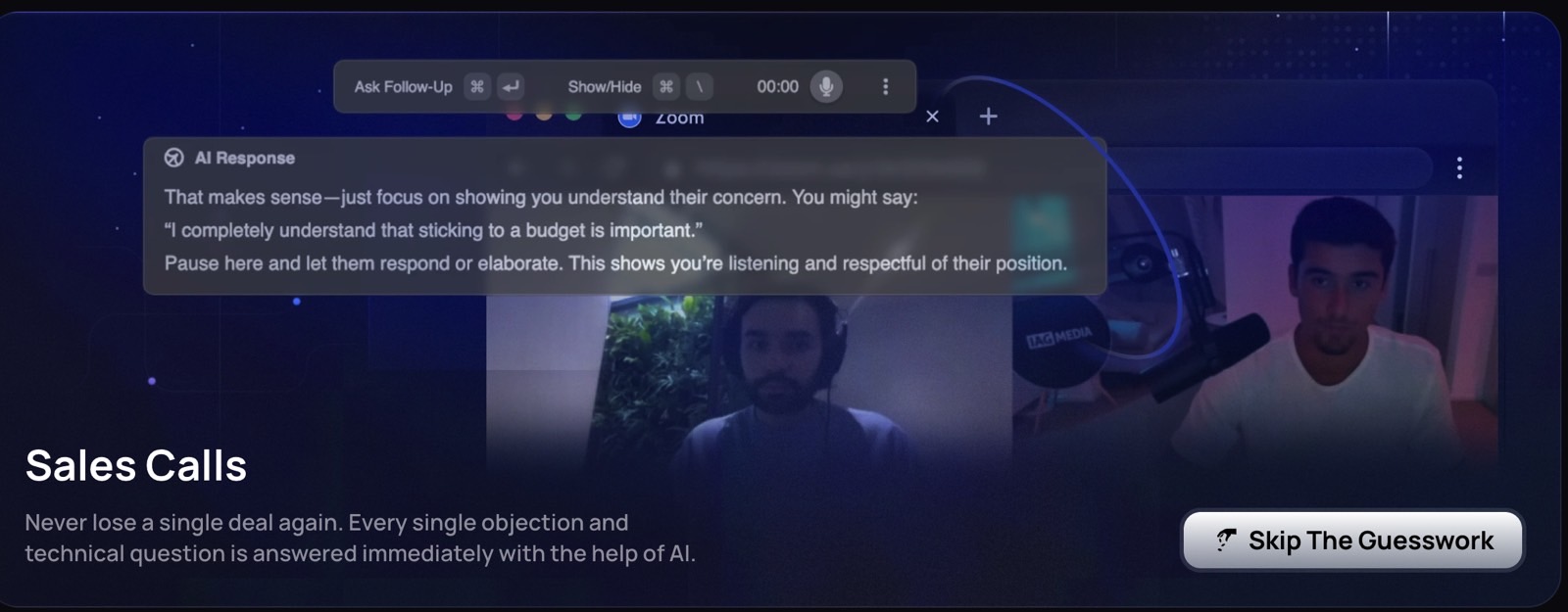













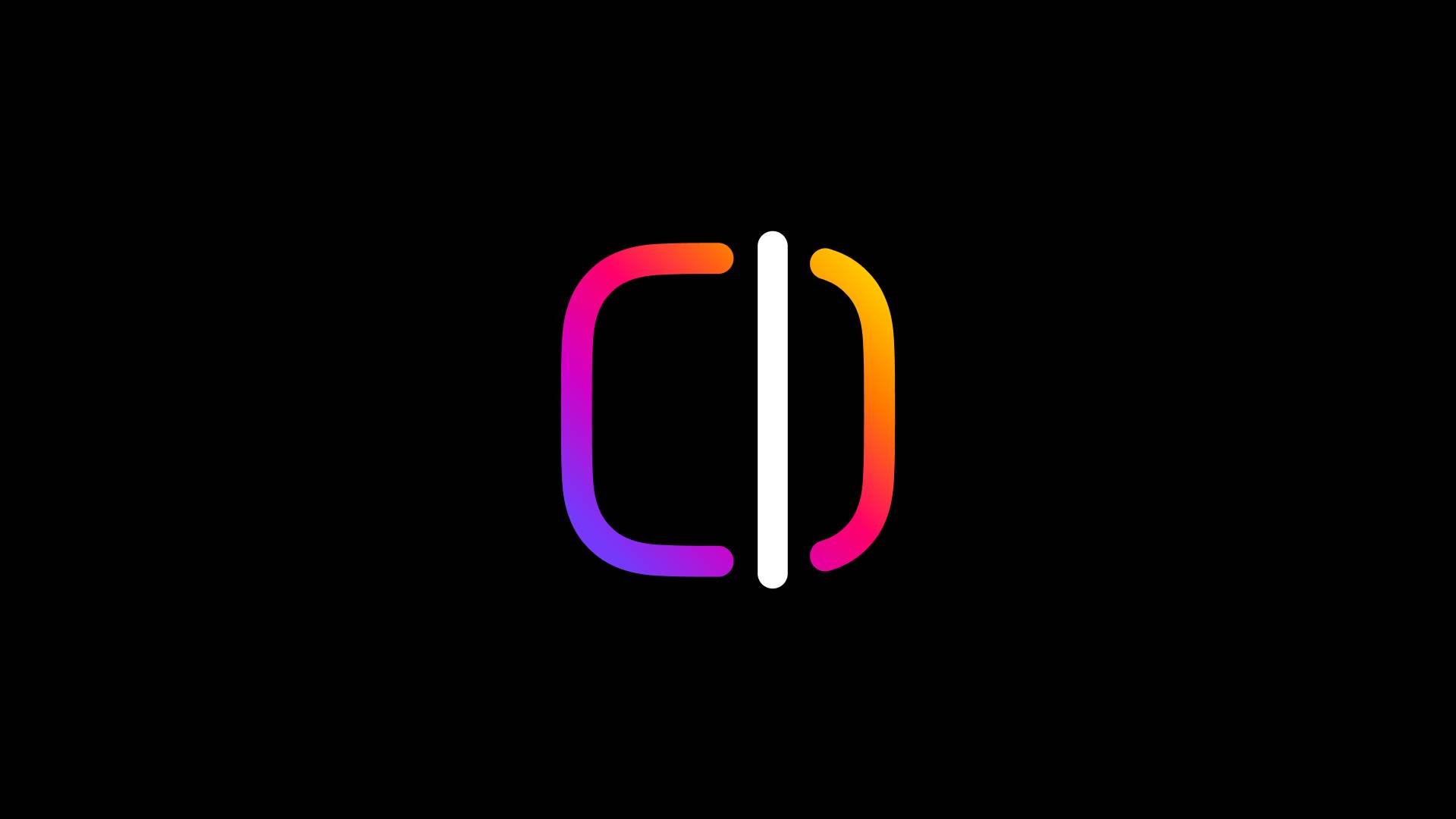





















![Apple Releases Public Beta 2 of iOS 18.5, iPadOS 18.5, macOS Sequoia 15.5 [Download]](https://www.iclarified.com/images/news/97094/97094/97094-640.jpg)

![New M4 MacBook Air On Sale for $929 [Lowest Price Ever]](https://www.iclarified.com/images/news/97090/97090/97090-1280.jpg)
![Apple iPhone 17 Pro May Come in 'Sky Blue' Color [Rumor]](https://www.iclarified.com/images/news/97088/97088/97088-640.jpg)
















